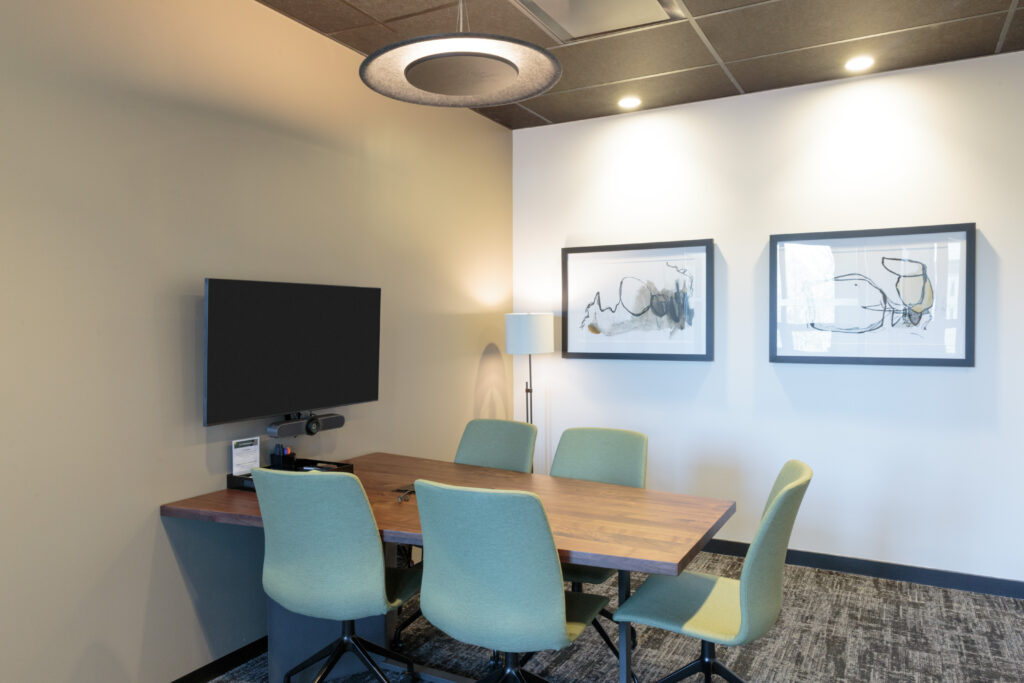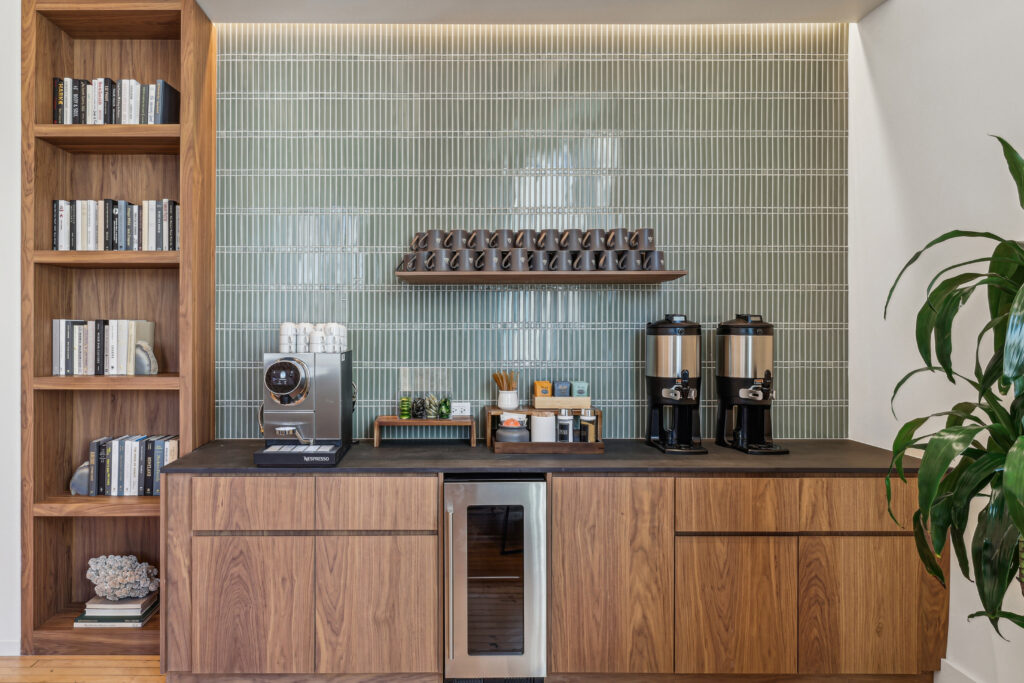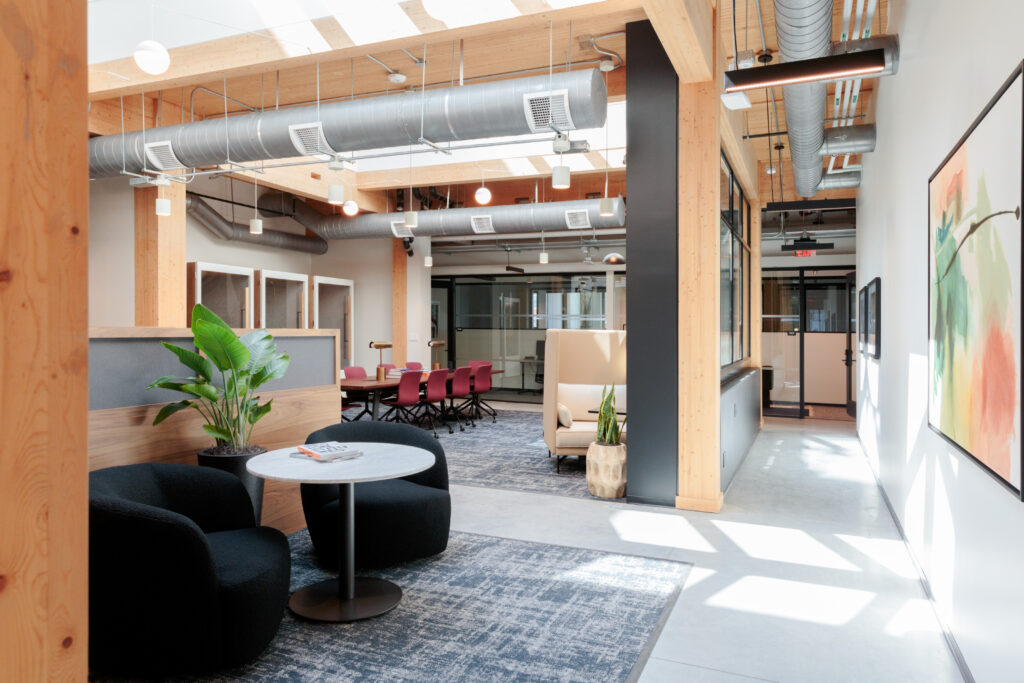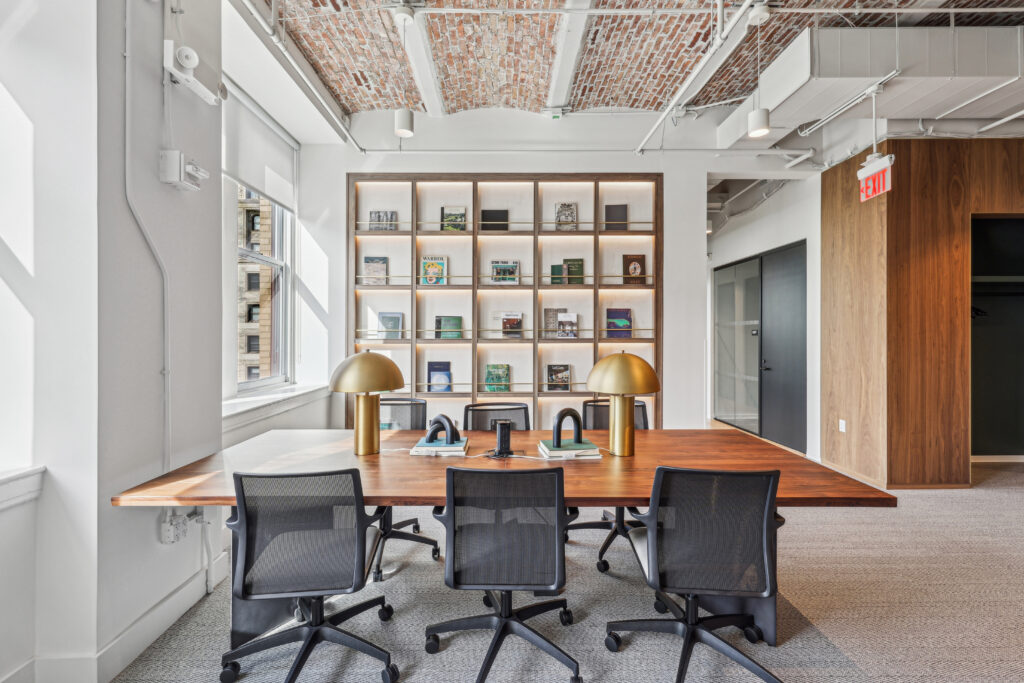Q+A with our Head of Design, Jean Chandler
As work evolves, so must the spaces we do it in.
In flexible office environments especially, design isn’t just about style—it’s about creating functionality, fostering connection, and supporting productivity across a wide range of needs. A thoughtfully designed space can help individuals focus, give teams room to collaborate, and even spark unexpected interactions between members who may never have worked together otherwise.
Jean Chandler, Senior Director of Design at Industrious, brings over 20 years of experience in the design world, with the past four dedicated to shaping flexible workspaces. Transitioning into this space has allowed her to rethink traditional office design, moving away from the cycle of constantly building and rebuilding for individual clients. At Industrious, spaces are designed to be adaptable from the start—built for customization without needing a full overhaul when tenants change. It’s a more sustainable, intentional approach that minimizes waste while maximizing versatility.
Here’s an inside look at how Chandler is approaching design at Industrious.
How do you solve for productivity and collaboration in a coworking space?
Productivity and collaboration are a closely linked issue. If you have a company with 300 people working for them, they have teams and departments and you come to work to collaborate with each other. For us, we have members, and some of our members have big teams of 100 people or so, and some with medium teams of 30-40 people, but a lot of our members are small teams or individuals. Our product serves people who may have moved away from where their company’s headquarters are. So productivity and collaboration is different for our members, and we set them up differently for that reason.

Industrious Williamsburg
We don’t have a ton of big, open spaces where 20 people could get around the table and do an activity, but we do have smaller areas for people to do that. We assume that folks are going to fly in and headquarter for a day, which is really neat because we can set up for a large group. But it’s about groups coming in and going out, and it’s very flexible.
For the productivity side, a lot of people argue that they’re more productive at home. We’re not here to compete with that, but we are here to say that when you do need or want to come in, we can provide areas for you to do a lot of really great focus work and on-demand privacy for focus work or collaboration.
A lot of Industrious tenants end up connecting. How does design encourage that?
Some of the members that I’ve talked to spoken about the personal and business relationships they create with people. One of them even coined the term “faux-workers” – coworkers who don’t work for the same company. There is even work we do with people who are our members. I think Industrious is a great contributor, a great partner, and a great neighbor. We facilitate that from member to member.
Humans are humans and they like a space that feels like a marketplace. In marketplaces, we’re used to a certain level of density, intimacy and closeness. The distance we place the furniture apart from other furniture shows up on the scene. We keep people close, but not too close. It’s like the water cooler times a thousand. It’s just natural to connect with each other. Our approach is on the side of casual instead of something that is too perfect. The way people behave in a space can be based on how the space looks and feels. Ours is warm and welcoming but still elevated.
It allows us to serve a bunch of different types of people all at the same time.

Industrious Union Square
Each Industrious location is designed specifically to where it is located. What goes into that?
We have local teams everywhere. For the markets we’re in, we interview and poll our staff. For specific builds that might be more challenging, me or someone on my team will fly there and draw out a map of how to do what we do in that very particular type of space. It’s nuancing the neighborhood in person. We are doing more and more in-person stuff. It’s hard to do when you produce at the scale we produce at, but it’s important.

Industrious Williamsburg
Knowing how humans perceive their environments, everything that feels a little off is a distraction point. That might mean that something isn’t on par with the other experiences that you choose, like the gym or where you grocery shop or go to the movies. We choose the things that make us happy, and if our product is not nailing that, people notice. If you add up all of those detraction points, it can be a lot. Our jobs as designers is to design the flow in such a way you’re not bumping into someone when you need to get milk for your coffee, to make sure that the lighting is light enough to work, but not so bright it’s giving you a headache, to make sure that the color palettes are natural tones and not making you feel anxious during a presentation.
“There’s no limit to the choices that you can allow yourself to have by working at Industrious.”
How does design at Industrious continue to evolve?
One thing that I helped my team do is inventory every single piece that makes up Industrious from a design standpoint. We scored every single thing on how much impact it is providing to the members’ experience. We were able to say, ‘This detail that we’re doing in the ceiling next to the bathroom corridor doesn’t get noticed and it doesn’t really matter. Let’s simplify that.’ But when it comes to the reception area, we can’t cut back there. We need to make people feel warmed, welcomed and invited straight away. We need great signage that they know where they are and there’s no anxiety. That helped us create a new design version. In the latest, we made it even warmer, more welcoming and more elevated.

Industrious Union Square
Now, where we are at, which is super exciting, is that we’ve been acquired by CBRE. We are a hospitality company at heart and always have been. What’s exciting for me and my design team is that we can start using some of the materiality we had, maybe in other places trickle down on making people feel engaged, empowered and delighted. We can layer on even more parts of the experience in this next chapter.
It’s about movement, autonomy, choice, flexibility and curation. Members get to curate themselves too. Where do you want to be once you get here? Which spots do you want for yourself? Where do you want to spend time with others? Do you want to be by the window? There’s no limit to the choices that you can allow yourself to have by working at Industrious.